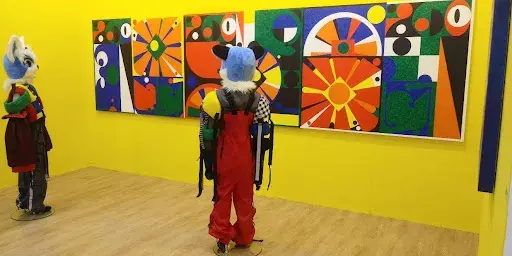Korean Art Market Surpassed $800 Million For the First Time in 2022
The Korean art market seems to have reached nearly USD 800 million (KRW 1 trillion) in trading at the end of 2022. This is the result of the explosive expansion of transactions that began in 2021. However, the market is expected to freeze sharply in the aftermath of the global economic recession from the second half of 2022, making it difficult for growth to continue in 2023.
The Korea Arts Management Service (KAMS) estimated the size of the Korean art market to be $825 million (KRW 1.46 trillion) in 2022. Among them, art fairs accounted for about half of the total with $400 million (KRW 502.1 billion won), while the volume of transactions through auctions and galleries was $190 million (KRW 242 billion) and $238 million (KRW 302 billion), respectively. However, this did not include the transaction amount of the global art fair Frieze Seoul, which is estimated to be more than $472 million (KRW 600 billion) in transactions. Frieze did not disclose the transaction amount of Frieze Seoul, which was held for the first time in Korea last year.

The Korean art market has shown rapid growth over the past two years. The market, which was $300 million (KRW 381.1 billion) in 2019 before the COVID-19 pandemic, retreated to $258 million (KRW 327.7 billion) in 2020, when the pandemic broke out, and more than doubled to $663 million (KRW 841.5 billion) the following year. Growth continued in 2022, up more than 20% from the previous year. Compared to 2019, just before the pandemic, art fairs, auctions, and gallery transactions have all more than doubled.
However, it is unclear whether the growth of the art market will continue in 2023. The market, which has heated up over the past two years as young people, including the MZ generation (Millennials and Generation Z), have jumped into the art trade, seems to be cooling down sharply since the second half of 2022. The successful bid rates were 69% and 74%, respectively, at the last sales of Seoul Auction and K Auction, Korea’s two largest auction companies, in December 2022. The sale of Kim Whan-ki’s blue ignition, which was expected to cost around $4 million (KRW 5 billion), was canceled due to the judgment that it was difficult to receive an appropriate price. Another work by Kim Whan-ki, which was estimated to be around $2 million (KRW 2.5 billion), was sold for $1.26 million (KRW 1.6 billion).
This strained atmosphere of the art trade has emerged since the third quarter of 2022. The total amount of auction bids, which reached $75 million (KRW 95.3 billion) in the third quarter of 2021, was reduced to $35 million (KRW 43.9 billion) in the third quarter of 2022, less than half. The winning bid rate was also lowered by about ten percentage points from 70% in the third quarter of 2021 to 60.1% in the third quarter of 2022, and concerns over a market slowdown were high due to a series of failures in bidding. It is difficult to be optimistic whether the market will be able to recover in 2023 as the market was also sluggish in the fourth quarter of 2022. However, it is meaningful to confirm the growth potential of the Korean art market since the total amount of art transactions exceeded $800 million (KRW 1 trillion) in 2022.

An official from the Korean art community who runs the gallery said, “We were able to confirm the growth potential of the Korean art market through Frieze Seoul,” adding, “However, the market is still in a ‘growth period,’ so it is sensitive to the domestic and foreign economy. As the younger generation has begun to be interested in art, the possibility of growth in the future is endless. Mature efforts by the Korean art industry are very important as the controversy over forgery that also appeared in 2022 has a negative impact.”
In the past two years, the MZ generation has stood out in the Korean art market. According to Internet reservation site Interpark’s survey of art museum visitors in 2022, ticket sales and visitors increased by 47% and 33%, respectively, from the previous year. Among the visitors, 39.7% were in their 20s and 31% were in their 30s, accounting for 70% of the total.
Meanwhile, according to the English-language report Korea Art Market 2022 co-produced by the Paradise Cultural Foundation and the Seoul National University Business School and sponsored by KAMS, the transaction volume exceeded $800 million (KRW 1 trillion) and the rise of Millennial collectors were cited as keywords for 2022. The report showed that the art fair market share soared in 2022 and the opening of international mega galleries such as Perrotin, Lehmann Maupin, and Pace have buoyed the market. Additionally, the report noted the influence of forthcoming museums and art galleries, the active acceptance of technological changes such as NFTs, and the increased flow of new buyers and collectors through digital platforms.
This English report on the current Korean art market can be downloaded free of charge from the KAMS website.











